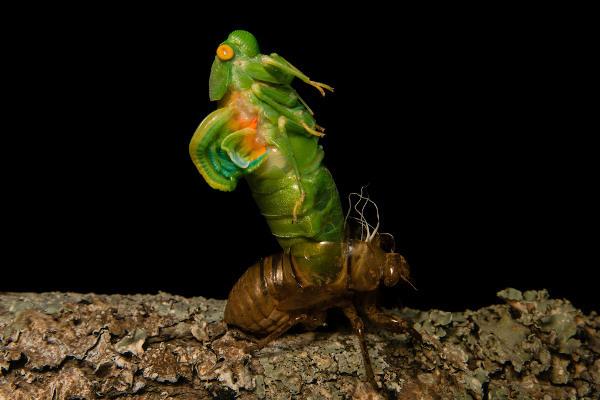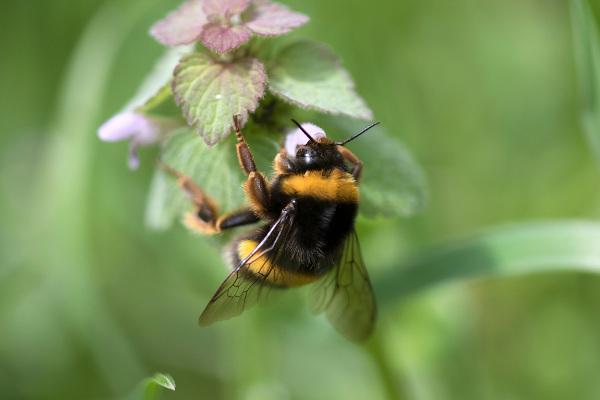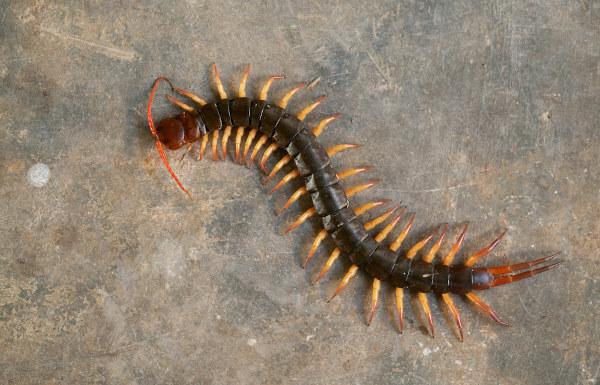You arthropods (Phylum Arthropoda) are invertebrate animals that have great evolutionary success. a billion billion species (1018) different living on the planet.
This group is of great importance, both ecologically and economically. At bees, for example, are pollinators of a large number of plant species. Many crustaceans they serve as food for man, this being the case of lobster and shrimp. Let's not forget that some insects are vectors of diseases and that animals such as centipedes, spiders and scorpions can cause several accidents with humans.
Read too: Insect accidents and allergic reactions
General characteristics of arthropods
Arthropods are a very diverse group of animals, however we can observe some common characteristics in different species. All arthropods are animals:
- protostomes (the blastopore gives rise to the mouth);
- triblastic (feature three embryonic leaflets: endoderm, mesoderm and ectoderm);
- coelom (they have a body cavity lined with tissue derived from the mesoderm called coelom);
- they have bilateral symmetry (imaginary division that divides the body into two equal parts);
- they have a segmented body and articulated appendices.

You articulated appendices, over time, became specialized. Thus, currently, there are appendices related to locomotion, defense, nutrition, sensory function and reproduction. The presence of these articulated appendages, segmented body and exoskeleton contributed to the group's success.
the presence of a exoskeleton (outer skeleton) chitin is a hallmark of these invertebrates. It protects the animal's body, in addition to acting as an attachment point for the muscles that act to move the appendages and prevent excessive water loss. However, this structure also impedes the animal's growth. This means that, from time to time, the arthropod has to change the exoskeleton, in a process known as changes or ecdysis. During this exchange, the invertebrate is very vulnerable to the action of predators, since the newly formed skeleton is still very delicate.
The circulatory system of arthropods is of the open type, that is, blood does not flow exclusively inside vessels, but is released into spaces that surround tissues and organs. The fluid that circulates in the body of these animals is called hemolymph. With regard to the respiratory system, there are variations within the group. Some species have gill breathing (most aquatic species); some, foliaceous lungs (arachnids); and there are also tracheal systems, the latter being seen in most insects.
The digestive system is complete and with extracellular digestion. The excretory system also varies between groups. Insects and other arthropods, for example, have Malpighian tubules, thin tubes that run from the digestive tract. In addition to the Malpighian tubule, other organs of excretion observed are the antennal glands, which release residues at the base of the antennae, and the coxal glands, which have excretory pores opening in the thighs.
In arthropods, there is a high degree of cephalization, and their nervous system consists of a dorsal forebrain, followed by a ventral nerve cord, which presents ganglionic swellings in the segments. These invertebrates still have highly developed sense organs, being possible to verify the presence, for example, of eyes and olfactory receptors.
THEreproduction is mostly sexual, but asexual reproduction also occurs. Bees, for example, produce drones by parthenogenesis. Internal fertilization is the most common, and development can be direct (no metamorphosis) or indirect (metamorphosed).
Read too: Types of Animal Breathing
Do not stop now... There's more after the advertising ;)
The arthropod groups
According to morphological and molecular evidence, we can classify the arthropods in three different strains: chelicerates, myriapods and pancrustaceans. In the group of chelicerates, the arachnids stand out, which form most of the modern chelicerates. In myriapods, we have the chilopods and diplopods. Finally, in the pancrustaceans group, we have insects and crustaceans. We will present below the characteristics of the following groups: arachnids, insects, crustaceans, chilopods and diplopods.
Arachnids

Arachnids have four pairs of legs locomotives, a pair of chelicera and a pair of pedipalps. The chelicera, characteristic that names the group of chelicerates, work as tweezers or claws. In the spiders chelicerae have venom glands, which help the animal capture its prey. Pedipalps, in turn, help the animal in feeding, defense and reproduction, for example.
This group has no antennae, and its body is divided into cephalothorax and abdomen. Are representatives of the arachnids the spiders, scorpions, ticks and mites.
Insects

Insects have a body divided into a head, thorax and abdomen, three pairs of legs, a pair of antennae and, in many species, one or two pairs of wings. In these animals, there are mouthparts that vary between species and that are adapted to the type of food, there are, for example, chewing, licking and sucking devices. It's the most diverse group of arthropods, being found in several different places, including in the aquatic environment.
They feature great ecological as well as economic importance. Bees, for example, are insects related to pollination, in addition to providing important products such as honey. We cannot forget that there are insect vectors of diseases, such as the Aedes aegypti, who is responsible for transmitting the dengue, zika and chikungunya.
insects have sexual reproduction, usually with individuals of separate sexes. THE fertilization is internal in most cases. With regard to embryonic development, there are species that do not have metamorphosis and those that undergo transformations (metamorphoses) during its development.
THE metamorphosis in insects it may be incomplete or complete. In incomplete metamorphosis, the young (nymph) has characteristics similar to those of the adult. In complete metamorphosis, the larval stage is quite different from that of an adult individual. Incomplete metamorphosis can be seen in grasshoppers, while complete metamorphosis can be seen in butterflies.
Read too: Grasshoppers - all about this insect
Crustaceans

Crustaceans have a body divided into cephalothorax and abdomen and have highly specialized appendages. In these animals it is possible to observe two pairs of antennas, which are the most anterior appendages. They have three or more pairs of appendages modified as mouthpieces. As far as the locomotor legs are concerned, their number varies. O exoskeleton is enriched with calcium carbonate, forming a carapace. As examples of crustaceans, we can mention crabs, shrimp, lobsters, crayfish and barnacles.
Chilopods

Chilopods or centipedes have an elongated body—divided into a head and trunk—a pair of antennae and trunk segments containing a pair of legs. They are carnivorous and terrestrial animals, in addition to having appendages capable of injecting venom to paralyze their prey. Centennials are a great example of chilopods.
diplopods

Diplopods or millipedes are terrestrial animals that have an elongated body and a pair of antennae. Some authors consider the body of this animal to be divided into head and trunk, while others consider the division of head, thorax and abdomen. Their trunk is formed by two fused segments, which makes them have two pairs of legs per segment. These animals feed-if of vegetables. Examples of diplopods are the embuá.
By Vanessa Sardinha dos Santos
Biology teacher

